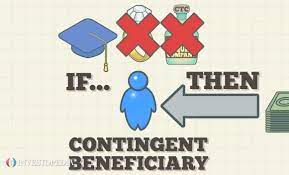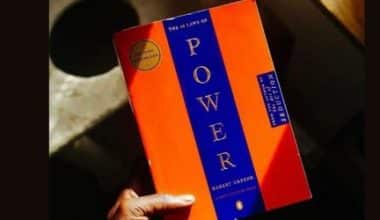Having a knowledge of the characteristics of a contingent beneficiary and understanding the differences between the primary vs contingent beneficiary is important when appointing a Contingent beneficiary in the process of life insurance application has proven to be a huge challenge to most people.
This is usually a challenge when they don’t understand the system.
Over time, people ask similar questions like “the difference between a primary beneficiary and contingent beneficiary”.
This article focuses on;
- Contingent Beneficiary.
- What is contingent beneficiary?
- Life insurance contingent beneficiary.
- Primary vs Contingent beneficiary.
- Characteristics of the contingent beneficiary.
Over view
A Contingent beneficiary is your contingency plan when the primary beneficiary who is to receive the benefits is unable to receive them due to certain valid factors like death, etc.
You might be wondering why you should assign another beneficiary outside the primary beneficiary.
It’s advised because life is full of unforeseen circumstances.
Selecting a beneficiary is a safe way of protecting oneself and loved ones from scenarios that could arise at any point such as the death of the primary beneficiary, inability to locate the insured, etc.
However, several C.B can be listed, each of the enlisted is assigned a percentage of the benefits.
What Is Contingent Beneficiary?
What is a contingent beneficiary, you ask? Here it is.
A Contingent beneficiary is a person (or persons) stated by a retired account owner as the one to receive the proceeds or benefit if the primary beneficiary is dead, unable to be accessed, or refuses to accept the proceeds at the time these benefits are to be paid.
This C.B accepts the assets or proceeds in the same vein as that of the primary beneficiary.
After passing through major life issues like marriage, death, etc, it is important to review and update the beneficiaries.
Although the other beneficiaries will only inherit the assets if the primary beneficiary does not.
The asset manager will only release the said asset to your selected beneficiaries when the primary beneficiary refuse the assets or isn’t legally available to accept them.
Who should be contingent beneficiary?
A Contingent beneficiary is a person (or persons) stated by a retired account owner as the one to receive the proceeds or benefit if the primary beneficiary is dead, unable to be accessed, or refuses to accept the proceeds at the time these benefits are to be paid
What Is Life Insurance Contingent Beneficiary?
Apparently, a Life insurance contingent beneficiary is the individual that is to receive the money from the insurer’s death benefit when he/she passes away.
When you acquire a life insurance policy, you choose the primary beneficiary of the policy as well as the contingent beneficiary.
The beneficiary can be anyone. For instance, your child or a spouse can be the beneficiary.It can be multiple persons too. It’s solely dependent on you writing the will.
Choosing a beneficiary is an extremely personal decision that is built on your core values surrounding your finances.
Your beneficiary can be any person or entity of your choice, such as a spouse, charity, or your child.
Read Also: Beneficiary Of A Trust: Definition, Rights & Best US Practices.
Wondering how this works?
There are some conditions that come with the will but it’s heavily dependent on the insurer drafting the will. The beneficiary will receive nothing if the primary beneficiary accepts an inheritance.
For instance, let’s assume Hamilton listed his wife blossom as the primary beneficiary for the assets.
He also listed their only child as the C.B.
When Hamilton dies, blossom will receive the proceeds payout and their only child will get nothing.
If blossom dies first, their only child will receive all the proceeds.
What Is the Difference Between Primary and Contingent Beneficiary?
kindly find below the differences between primary beneficiary vs contingent beneficiary.
- A primary beneficiary is a person or an entity who will receive the payout from a policy when you die while the latter is an entity or person who is to receive the proceeds of the payment when the primary beneficiary is unable to receive the proceeds.
- If the primary beneficiary accepts the assets, the other beneficiaries get nothing. While the other beneficiary getting the assets is completely dependent on the decision of the primary beneficiary.
- Furthermore, The Primary beneficiary is the main beneficiary to the assets and proceeds while The C.B is your backup plan when the primary beneficiary is not available to have the assets.
Read Also: Cleaning services in Lagos: Top picks for the best deliveries (+ Quick review)
Most importantly, when arranging your personal life insurance policy, you’ll assign a primary beneficiary (preferably your spouse) who will receive all death benefits when you are no more.
Most times, there are no laid down rules on how to use the proceeds.
These proceeds maybe useful in sorting out financial needs of all kinds, day-to-day living expenses, alongside sorting of bills including mortgages.
In cases of multiple beneficiaries, You can allocate percentages for each of the beneficiaries, specifying what percentage each of the beneficiaries is to inherit.
CHARACTERISTICS OF CONTINGENT BENEFICIARIES
The characteristics of contingent beneficiary are numerous. The beneficiary could be a person, a firm, an entity, or charities.
Underage children should not be used as beneficiaries because there is no legal power covering them.
To list an underage as a beneficiary, a legal guardian will be appointed to keep the assets safe.
Based on past occurrences, it is important to use immediate families and relatives as C.B.
Designating a C.B will help the family of the deceased avoid irrelevant expenses incurred when there is no will.
For instance, Hamilton lists his children’s stepmother blossom as his primary beneficiary.
He also her favorite firm as the contingent beneficiary for her L.I (life insurance) proceeds.
Assuming blossom dies before Hamilton, His children cannot fight over her assets because she enlisted the firm as the C.B.
Conclusively, the SECURE Act states that the beneficiary is required to withdraw 100% of the deceased assets within 10 years.






